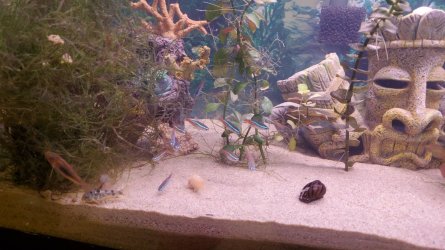The female came and picked them off the glass just a minute after I took the shots.
Seemed to be trying to move them to the floating plants, or did she just eat them? Couldn't tell for sure.
All fish including the cories themselves will readily eat any eggs they come across. If an egg is attached somewhere where the fish cannot easily spot it, it can survive and hatch. The fry if it has good cover has a better chance of surviving predation than the egg does. Over the years, I have had a few cory fry appear, most often in the canister filter; I assume the fry upon hatching was sucked in, as I cannot see the sticky eggs making it through the filter.


